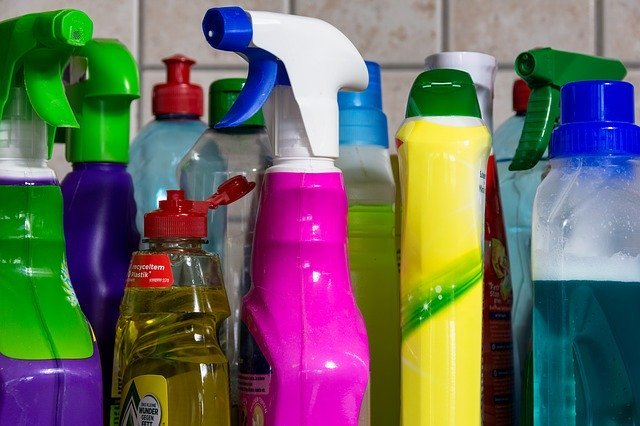by Emily Caldwell, Ohio State News
During the COVID-19 pandemic, every frequently touched surface outside our home seems as dangerous as a hot pot right out of the oven. We won’t get burned if we touch it, but we might get infected with a potentially dangerous virus.
A recent study suggests that even organized efforts to clean surfaces can fall short, a reminder for us all that keeping our surroundings clean may require some additional work.
For 5 ½ weeks, researchers tagged surfaces of a small-animal veterinary practice daily with a fluorescent dye visible only under black light. They checked tagged surfaces 24 hours later to see if the marks were showing. Surfaces were considered cleaned if the dye was completely removed.

Results showed that overall, only half of all surfaces were adequately cleaned during the study period. Human-touch surfaces – such as medical instruments, dog run handles, and computer mice and keyboards – were cleaned less frequently than areas touched primarily by animals. The results were similar to studies from other veterinary clinics.The researchers recommended creating checklists of surfaces that need to be regularly cleaned and educating all staff on the importance of proper cleaning to protect animal and human health.
“The concept of infectious diseases is around us all the time, but now it’s more important than ever to take steps to protect ourselves,” said senior study author Jason Stull, assistant professor of veterinary preventive medicine at The Ohio State University. “A recent study concluded the coronavirus causing COVID-19 has the ability to survive on certain types of surfaces for hours to a few days. At veterinary practices, other businesses and certainly human hospitals, surface cleaning and disinfection is extremely important. People come in and may contaminate an area and that area potentially can serve as a source of infection for other people.”
The study is published in the February issue of the Journal of Small Animal Practice.
Stull specializes in veterinary infection control, including prevention of diseases that animals can share with each other or pass to humans – such as Salmonella, E. coli and parasites.
For the current work, Stull and colleagues assessed almost 5,000 surfaces over the course of the study. On average, 50 percent of surfaces were cleaned, with broad variations by type of surface and hospital location. The human-touch surfaces were the least likely to be cleaned.
The study assessed everyday cleaning practices in a place where people spend lots of time with different animals and different people. It’s not too much of a stretch to apply some lessons to what we’re experiencing now with COVID-19, Stull said.
“Plenty of industries and groups outside of human health care have ramped up their efforts to clean and disinfect common-touch surfaces. The take-home messages from our study can have important parallels for others, such as other veterinary clinics, but also groups such as grocery stores.
“Our study also highlights that, despite our best efforts, 100 percent cleaning and disinfection is unlikely to occur. This is important to remember, as regardless of where you visit, it’s also best to assume surfaces may be contaminated – and before you come back into your home, you should follow the recommendations to clean your hands and clean items you’ve handled.”
At home, Stull said, it makes sense to concentrate on cleaning common-touch surfaces like doorknobs and countertops. “For the average person, it’s thinking about your list of things in your own home and ensuring that in some way that you’re actually hitting those pieces with reasonable effort,” he said.
On a normal day, people who have touched commonly shared surfaces should wash their hands before eating or scratching their noses. But will we remain diligent about this level of personal cleanliness – and community health – once the worst of the coronavirus threat is behind us? “People have a tendency to swing from extremes,” Stull said. “Changing the innate behaviors of people is always difficult, and we’ve struggled in human and veterinary health care to change these everyday practices.
“The hard part is continuing these efforts. When we get to the end of this, and at some point that will happen, you will likely see people revert back to their norm. What we need is a culture shift, so people recognize that infection control through hand-washing and thorough cleaning of shared surfaces is a critically important thing we can all do all the time, andit has measurable impact.”
Armando Hoet of Ohio State’s College of Veterinary Medicine and Gregory Langdon of the College of Public Health also worked on the study.









